If you're here to learn how to stuff your own homemade Italian sausage, you're in the right place!
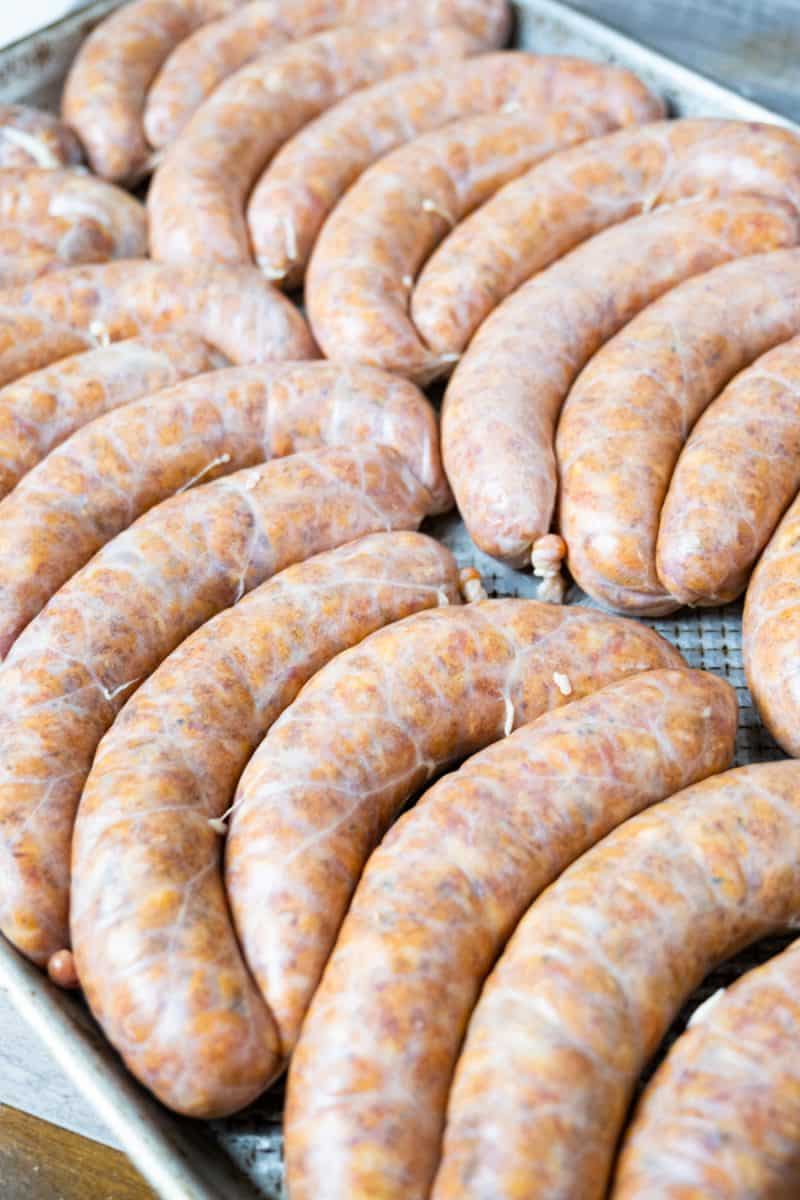
Stuffing homemade Italian sausage or any other sausage we make isn't just tasty, it's a family tradition. When we stuff sausages, we don't mess around here. Making homemade sausage is hard work, but so rewarding. If I'm going to break out the grinder and sausage stuffer, I'm making 10-20lbs of sausage easy. Otherwise, I feel like it's a waste of time. I store it in my freezer and it stays for 6 months!
Making sausage, like any other hobby, takes time to learn. This guide will absolutely help you, but nothing teaches you better than grabbing the things you need and going for them. So, use this blog as a guide and go for it!
How to Start Making Homemade Italian Sausage
The first thing to start with is having the things you need. Of course, back in the day, they used to stuff sausages by hand. But in the year 2023 of our Lord, we're just going to buy the tools that make this easy. If you're looking to stuff sausages by hand, I wish you luck.
Here are the tools I use when stuffing sausage:
These tools are great for beginners, especially if you already have a Kitchenaid Stand Mixer. You can just buy the attachments and try it out. Of course, if you're looking to get more serious there are other grinders and sausage stuffers that you can purchase, but those aren't what I would get into if I was just starting out.
Sausage Casings
If you're going to stuff sausages, you need something to stuff. Casings come in all different sizes and shapes. You've seen all different kinds of sausage, whether it be hot/sweet Italian, breakfast sausage, vegan sausage, or Italian sausage ring. All of these types of sausage will need different casings.
Hog Casings
Hog casings are probably to most common. Most sausages are made with pork so it makes sense we'd stuff hog casings. The easy way to explain a casing is that it is a part of the animal's intestine. It's not the entire intestine, that would be crazy obviously. It is just the submucosa. Alright, we're getting gross now. These are what I use when I'm making Hot and Sweet Italian Sausage.
Hog casings are pretty easy to work with because they have larger holes anywhere from 30-45mm but usually somewhere around 35-37mm. Casings come packed in salt to keep them fresh. You can repack them in salt and store them in the refrigerator.
Sheep Casings
Sheep Casings are a little less common and slightly more expensive. They are used for Italian ring sausage, breakfast sausage, and finger sausage. They are much thinner casings and also much longer because a sheep can have intestines twice as long as a hog! Sheep casings are typically 19-21mm wide but can vary from 19-30mm.
These casings can be slightly more difficult to work with because they are so much thinner than hog casings. They also provide less of a snap when you're eating your sausage as the casing is much softer.
Vegetarian Casings
Vegetarian casings are made with vegetable glycerin and sugar/starches. I've never experimented with these so I don't know much about them. I will update you in the future if I do work with these.
Artificial Casings
Hog and sheep casings are natural. Artificial casings are made from things like collagen and cellulose. Although these are the things that make up hog and sheep casings, artificial casings are ones that are made or processed into sausage casings.
How to Pick The Pork
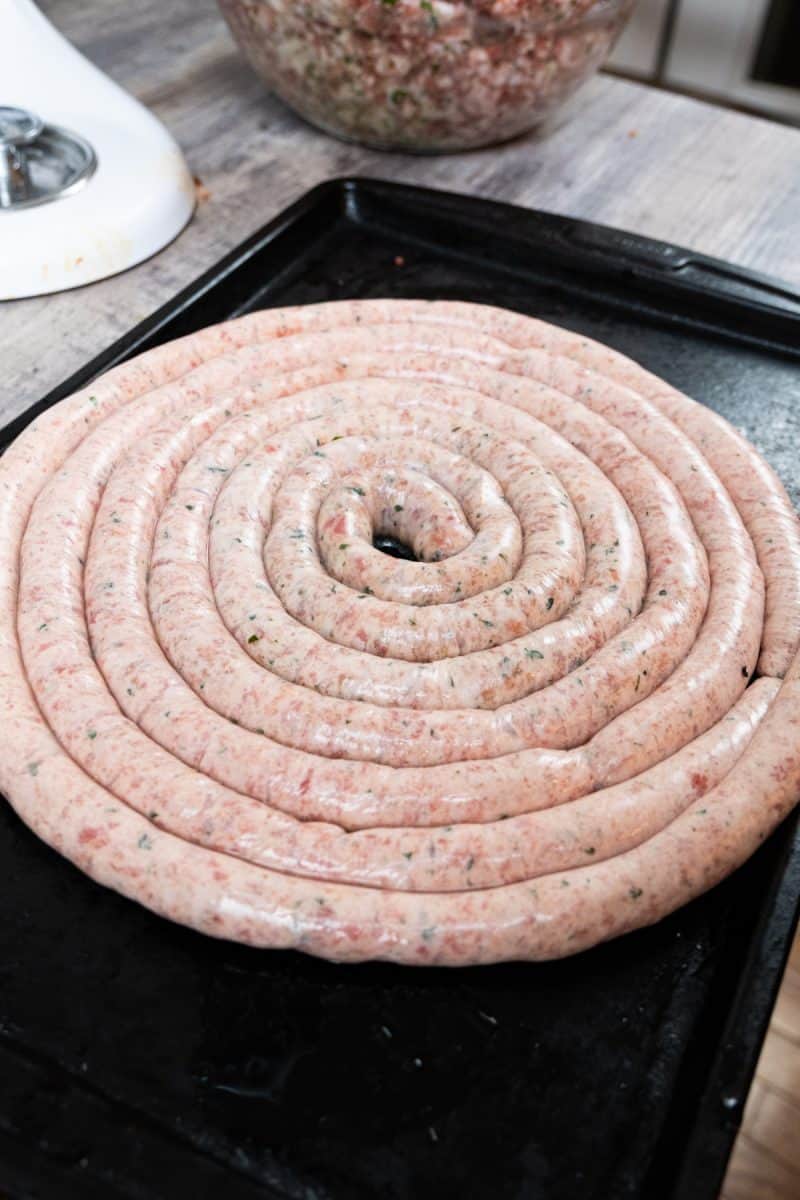
In general, for sausage, we're making it with pork. Even if you're making chicken sausage, it would be best to make it with some pork fat. Fat is tied for the #1 most important part of the sausage with salt. For most sausage, we want to use a Boston butt. It should have a good amount of hard fat in it. You could just go ahead and get a Boston butt and hope for the best but you really want to have 75% lean meat and 25% fat.
The best way to guarantee the right amount is just to ask your butcher. I've taken Boston butts and picnic shoulders home and cut them up myself and got close to the right amount of fat, but your butcher would be happy to provide you with the right amount of pork and fat, especially if you tell them what you're doing and give them enough time.
The fat
Whenever I go to the butcher, I go to a little place called Left Bank Butchery in Saxapahaw, NC. They always teach me something new. They talked to me about the type of fat you want in your sausage. The fat should be the hard fat, not the greasy loose fat. You're going to get a bit of both, but it's so much easier to feed the hard fat through the grinder instead of the wet, loose fat. The harder the fat the less chance it will smear as the temperature of it rises.
Chicken Sausage
Even with chicken sausage, you need a high-fat ratio of 75% lean and 25% fat. With chicken, you could use duck fat instead of pork fat. I also recommend using chicken thighs, not breasts.
Grinding the Meat
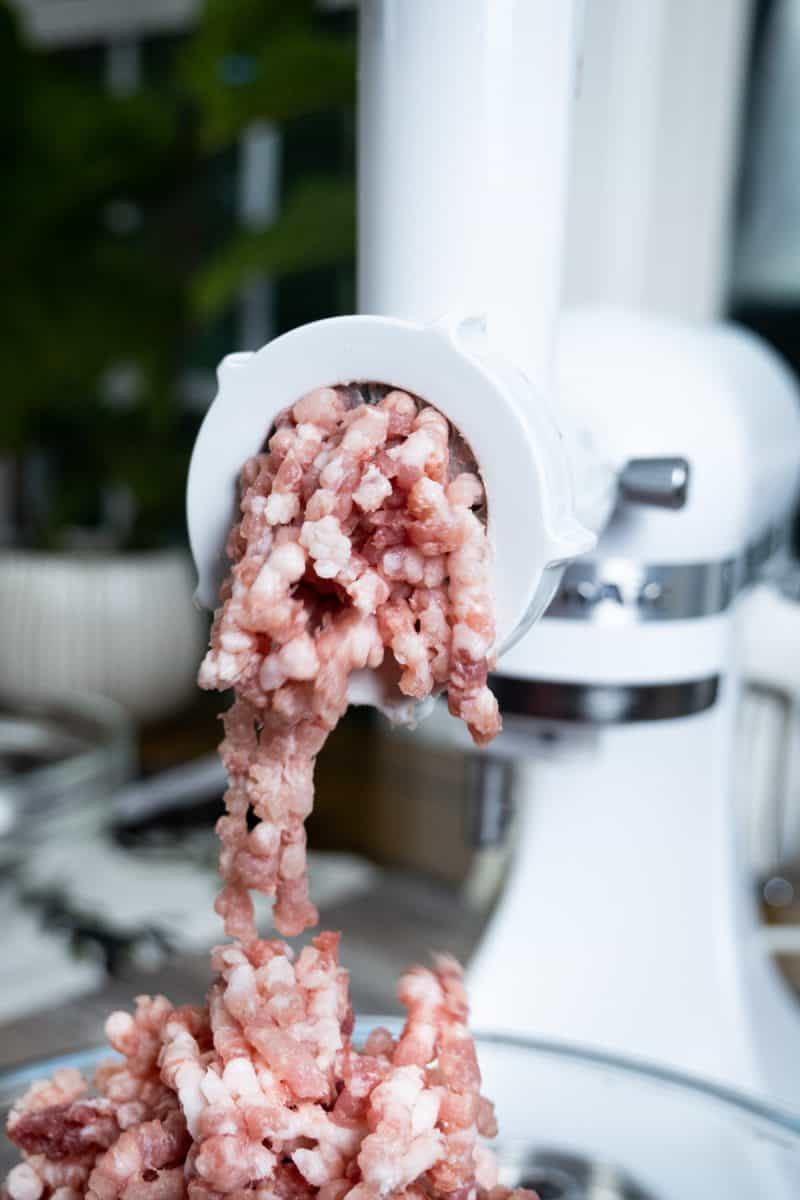
The next step in the process is grinding the meat. The Kitchenaid tools come with two types of grinding pieces one with bigger holes and one with smaller holes. You'll want to use the small holes when stuffing sheep casings and the bigger holes when stuffing hog casings.
When you're about to grind the meat, prepare it by cutting it into pieces that will fit into the grinder. Spread all of the meat out on a metal baking sheet. Place the baking sheet, along with all of the parts to the grinder in the freezer for 15 minutes. This will help firm up the meat and fat to keep anything from smearing. It will make the process a lot easier. You may need to do multiple trays in the freezer depending on how much meat you have. I can usually fit 5 lbs on a tray.
Remove from the freezer and set up your grinder. I usually grind at a speed from 6-8 on the KitchenAid mixer. Place a bowl underneath the grinder and start grinding the meat. Place the meat through the grinder and let the machine do the work. Use the tool they give you to help guide the meat through.
If you do see any smearing of fat, it would be a good time to stop, take a break and place everything back in the freezer for a few minutes and then restart when everything is cold. If you have a lot of the right fat, this shouldn't be an issue.
Seasoning and Salt
Salt content is so important to sausage. The salt content needs to be between 1-2% of the total weight of the pork. This will ensure that the meat sticks together in the shape of a sausage and is juicy and moist. Not enough salt and it will dry out and become mealy.
Seasoning is subjective. I have the recipes that I use whether it be for hot Italian sausage, sweet Italian sausage, feta spinach and chicken sausage, or Italian chevalatta. But the fun part about homemade Italian sausage is the seasoning. You get to make it what you want. The reason I don't buy sausage from the supermarket is because the seasoning is trash. When you make your own, you get to season it however you like. Definitely use some recipes as guidelines, because you want to make sure you don't underseason, like some of the brands in the supermarket.
Once you choose your seasoning, add it to the ground pork and mix until it is completely incorporated. Wrap it and place it in the fridge overnight. Let the salt and the seasoning permeate the meat so you get even flavor throughout.
Stuffing the Casing
Preparing the casings and the machine
Depending on the type of casing, you will likely soak the sausage in warm water for some time before stuffing. Follow the instructions on the casing package to make sure you're soaking for long enough.
Once the casing has been soaked I remove them and place them on a paper towel one at a time as I go. I allow the others to remain in the water while I'm stuffing so they don't dry out. Once you have one on the paper towel, dab some of the excess water away. Place the whole thing in your hand and cover it with a tablespoon of olive oil.
Set up your sausage stuffing attachment, using the appropriate size. Grease the tube with olive oil and then slowly thread the casing onto the tube. Once you get the entire casing on leave about 2-3 inches hanging off the end. Don't tie your knot just yet.
Stuffing the sausage
Remove the sausage from the fridge and start placing some into the hole in the Kitchenaid mixer. Start the machine slow at a speed of 4 until you see the meat reach the end of the tube coming towards your casing, then turn it off. Now, tie the knot in the casing. This will make it so less air gets into the casing. If you tie the casing right away, you pump so much air through the machine and end up having to pop a hole in the casing.
Once you have your knot, start the machine back up at a speed of 6-8. Allow the pork to fill the casing as you slowly pull it back towards yourself. If I'm making link sausage, I always spin the links as I go. I usually give four turns to each link then keep stuffing. You want to work fast when spinning the sausage. Place your thumb and forefinger where you want to spin, press tightly and turn. Making the links as you go makes sure you have enough casing and don't overstuff the sausage. It also makes it easier to get the same size links.
Once you get near the end of the casing, stop the machine, and tie off the end of the casing. If you don't have enough room, you can always squeeze out some extra sausage to make room.
When you have all of the sausage stuffed, place it on a tray, and rest in the fridge overnight. Letting the sausage take its form overnight will make it less likely to burst while cooking. You could go ahead and cook it right away.
What to Make with Homemade Italian Sausage
There are so many ways to use this sausage. Whether it be grilled sausage, sausage and peppers, Sunday sauce, chicken scarpariello, or sandwiches. That's why I always make so much of it. I can store it in the freezer for later use!
Serve it alongside your favorite pasta like Italian Pasta Salad or Creamy Red Pepper Sauce.
Can you Freeze Sausage?
Yes! You can freeze homemade Italian sausage for 3-6 months. The best quality will be from 1-2 months, but the freezer will pretty much keep it safe indefinitely.
Feel free to contact me on Instagram @vindelgiudice if you have questions!

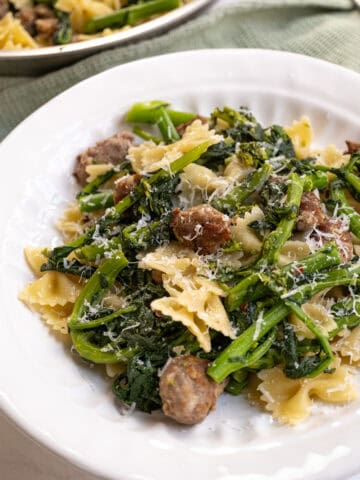
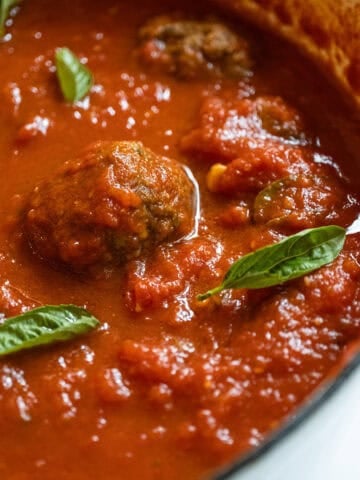


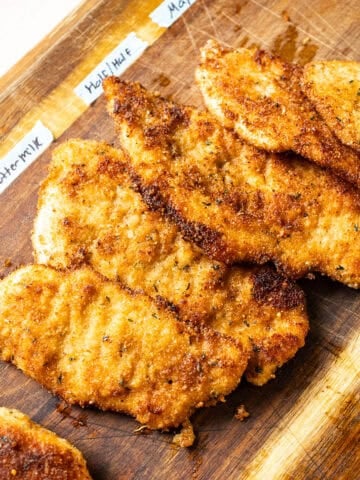
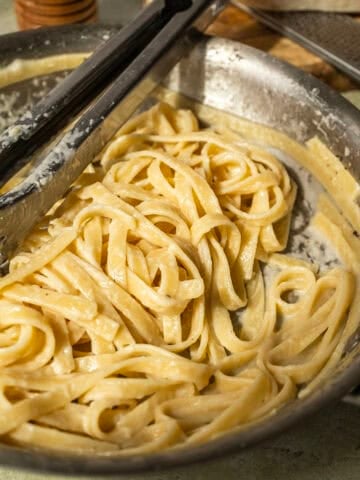
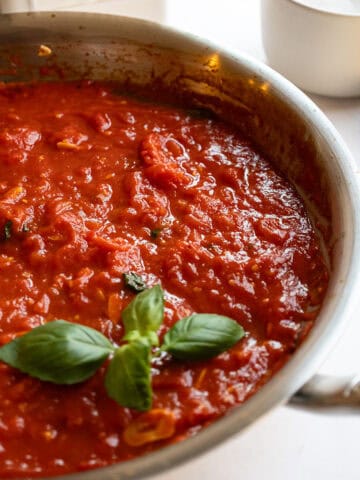

Comments
No Comments